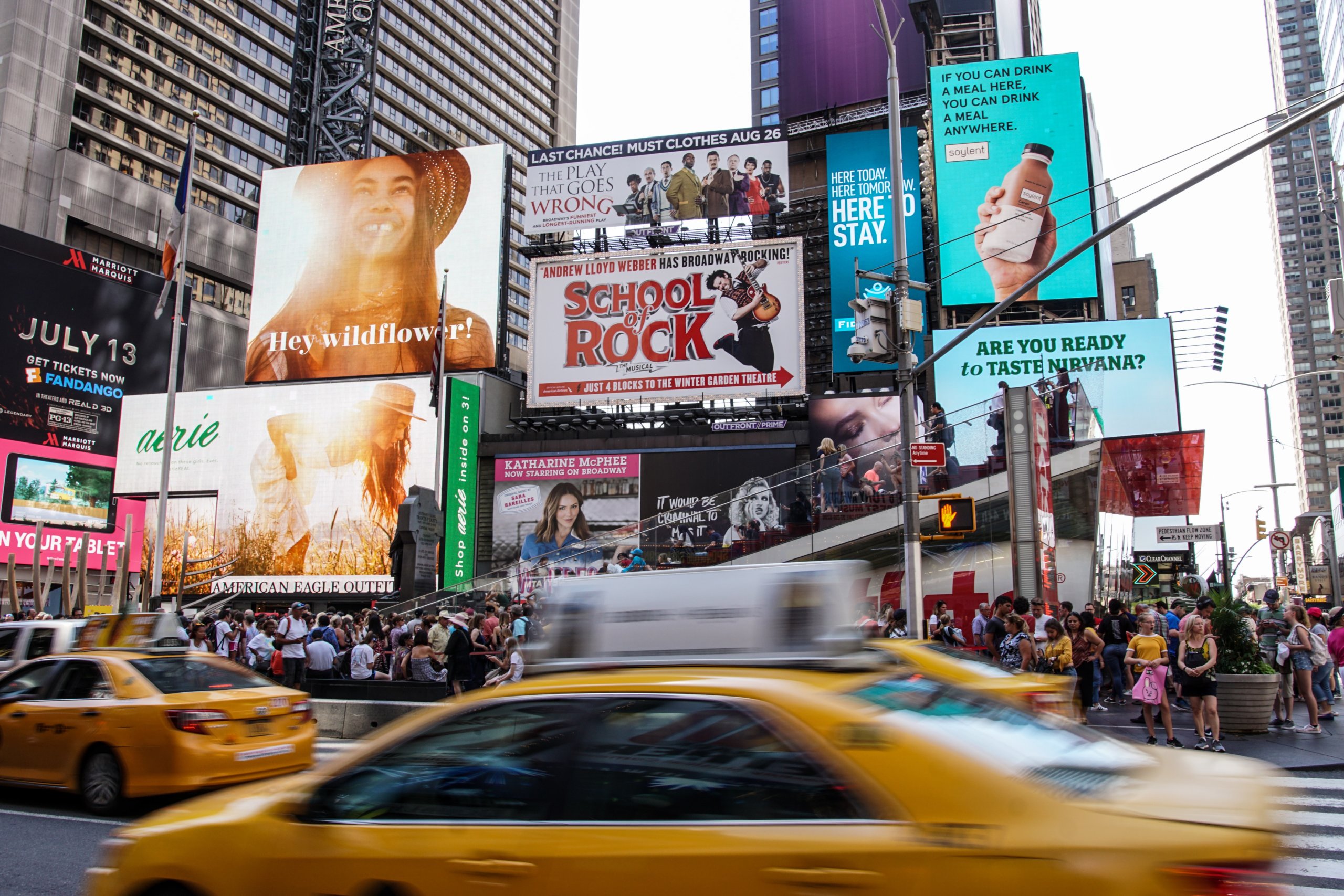People will be doing a lot more local and car-heavy travel
When the federal government told the country to stay home during the coronavirus pandemic, it was inevitable that out-of-home advertising would take it on the chin, as 40% of out-of-home advertisements lost their usual audiences, according to the industry’s trade group.
As the U.S. begins to slowly open back up and consumers crawl away from their self-quarantines, advertisers will respond. And as they do, the billboard may become more valuable than ever.
Local travel never completely stopped, especially in suburbs and areas that don’t rely on public transportation. Many still make trips to the grocery store, gas station and other essential businesses, as well as enjoying a drive around town. That’s only increased since April, as Americans are traveling more across all 50 states. The average number of daily miles traveled for individuals is up 18%, from 9.8 miles during the week of April 6 to 11.5 miles during the week of April 20, according to Geopath, the measurement arm of the OOH industry.
And more miles on the road means more opportunities for advertisers to catch travelers’ eyes.
“What’s important in this pandemic is for brands to be nimble, get the message out at the right time more than ever. And digital, big billboards really provide an opportunity to update content basically on the fly,” said Anna Bager, president and CEO of the Out of Home Advertising Association of America. “A lot of budgets are going to shift to the roadside as a lot of Americans are going to choose to travel by car this summer.”
Roadside billboard out-of-home traffic, defined as the kind of billboard you’d see off a highway 20-feet in the air, is down only 55% since the first week of March, according to Vistar, a programmatic technology company that focuses on out-of-home advertising. But between April 19 and 26, billboard traffic had increased by 26%.
That figure should continue to rise as states like Texas, Georgia and Florida ease restrictions. Of roadside billboards, two-thirds of the brands that advertise are local, according to OAAA.
Meanwhile, according to a survey taken by the U.S. Travel Association, 47% of participants said they would travel by car for a vacation after Covid-19 passes, up 35% when asked a week earlier. And 42% said they’d travel somewhere close to home, with 54% also saying they’d travel within the U.S. instead of traveling internationally.
“What we see happening in the coming months is this pent-up demand,” said Dan Levi, evp and CMO of Clear Channel Outdoor Americas. “We’re all going insane and we want to go out, so we expect that as restrictions are relieved a bit we expect to see people leaving their homes pretty aggressively.”
Conversely, trust in travel brands is low. According to the data firm Magid, trust in airlines, airports and cruise lines all fell below 40% in a consumer survey, with most consumers most comfortable traveling to destinations closer to home. Additionally, hotels traditionally market in their own backyards when times get tough.
While some brands have taken note, the added cost of international travel and fear of exposure may keep many from America’s airports for quite some time.
Already, airport OOH traffic is down 74% according to Vistar. Some airline executives have predicted that it could take as long as three years for airlines to recover. The TSA has even noted that their own traffic has dropped 95% over the course of the pandemic.
“Without question, there’s a massive decline in the people who are in airports today because those flights aren’t going and most people aren’t traveling,” said Levi. “The reason we’re staying on top of the data is to help understand when the trend is changing. Our expectation is what will come first is business travel.”
Programmatic advertising allows for a brand to either launch or shutter a campaign instantly. Clearly, that’s useful in a sensitive climate, and as social distancing rules relax across the country. Instead of shelving previously scheduled campaigns, brands may stagger and instead target county by county as they open.
“There’s certainly been quite a decline in overall out-of-home ad spending as we would expect,” said Leslie Lee, vp of marketing at Vistar. “But a lot of brands and advertisers are actually just shifting their strategy, looking at venues and locations that are shut down but shifting it where people are still out and about.”
Levi at Clear Channel agreed. “We respond to the demands of our markets,” he said, noting that one of the best tools for a brand like Disney World or AMC Theater to tell its audiences that they’re back in action would be a publicly available medium like OOH.
For airport OOH, even though traffic has fallen, some real estate is priceless, as building OOH inventory requires physical work and approval from legislators. For roadside brands like Cracker Barrel and McDonald’s, advertising space on the side of highways is prime real estate. And if they give that up, there’s no guarantee that they’d get it back, said Levi.
“If an advertiser says to us, ‘We got to cancel, we’re out,’ then we’re going to sell that to someone else,” he said. “For those kinds of businesses that need the airports, the b-to-b businesses, that’s a key way to reach business travelers. They don’t want to lose that inventory.”
As for the recovery, Levi isn’t convinced that there will be one best way to reach audiences as the country returns to normalcy, saying, “our product isn’t the billboard; it’s the people that are reached by the billboard.”

